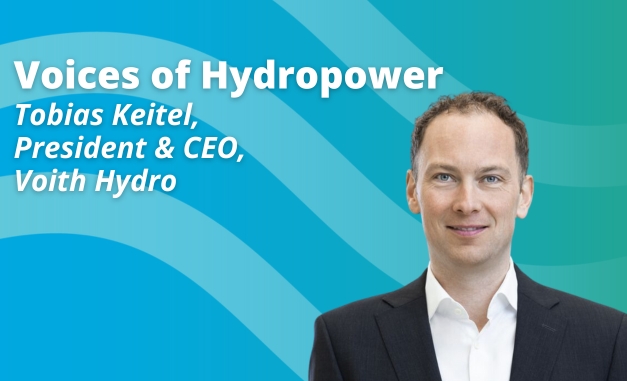Preparing for climate change in hydropower development
Issues of climate resilience and climate change adaptation have become increasingly important for large infrastructure investments. In water resources management and hydropower development there is a concern that climate-induced changes in the flow regime might have adverse impacts on technical and economic project viability.

This applies to new investments and existing infrastructure alike. However, it is often forgotten that for hydropower assets, climate change is not always a threat but in many cases also an opportunity.
In mountainous catchments, where snow melt plays an important role, the expected temperature increase might lead to a more balanced flow regime and reduced spillway losses.
In certain catchments melting of glaciers will also lead to a temporary increase of total flow volume, which might last over decades or centuries.
There are also many regions where an increase in precipitation is expected, which will lead to an increase in flow volume and hydropower production. On the other hand there are certainly hydropower regions, which will experience a decrease in runoff. This might be due to increased evapotranspiration losses caused by higher temperatures or due to a decrease in precipitation.
Hydropower developers must carefully assess if they are investing in a region where climate change is expected to have a positive or negative impact on hydropower production. Knowing about the expected changes will allow developers to adapt plant design and operation to maximise the benefit from climate change, or to mitigate adverse impacts.
Yes, there is considerable uncertainty in such assessments, but in many cases the climate change signal is much stronger than the noise introduced by climate variability or uncertainty in projections.
This is true for the records of recent decades (1990–2015), which in many regions show a significant temperature increase that can hardly be explained by natural variability. But also the expected temperature increase up to 2050 is associated with little uncertainty. Mean annual and seasonal temperature changes predicted by most global and regional climate models are consistent.
Hydropower developers must carefully assess if they are investing in a region where climate change is expected to have a positive or negative impact on hydropower production."
Also, the uncertainty introduced by the wide range of possible emission scenarios should not be overrated. The emission scenarios are mainly relevant for long-term projections, i.e. for the extent of global warming to be expected in the second half of the 21st century, whereas the warming we will experience up to 2050 is mostly driven by historic, present and near-future emissions.
Hence there is not too much uncertainty about the global (and regional) temperature increase to be expected during a 30- to 40-year operation period as typically used for economic evaluation of a hydropower plant.
Other than temperature, the projection of future precipitation is almost always associated with high uncertainty. In many regions, trends in precipitation due to climate change are also expected to be less relevant than natural variability of precipitation.
When developing hydropower projects in a certain region, it is therefore important to understand if the flow regime is mostly precipitation driven (then the effects of climate change are rather uncertain) or if there is also a strong effect of the seasonal temperature on runoff generation, such as glacier and snow melts or evaporation from soil storage (then the effects of climate change can be predicted with less uncertainty).
In the first case, climate-proofing of a hydro investment should be based on a more general sensitivity analysis with the focus to increase the overall climate resilience. In the second case not only climate resilience should be ensured, but the design should be optimised for the flow regime expected for the period of operation.
Under changing climate conditions hydropower design should always be based on recent data as well as on projections of the future climate."
In order to predict the future flow regime, it is essential to develop a good understanding of the relevant hydrological processes in a catchment of interest. Typically this is done by using hydrological models. If skillfully calibrated and applied, these can really add value to a hydropower study.
Sometimes with unexpected results: a hydrological modelling study conducted by Pöyry for a hydropower project in the West Balkan, where strong temperature increase and significant precipitation decrease is expected, showed that hydropower generation would be surprisingly robust.
This robustness could be explained by seasonal aspects of catchment hydrology, but also by the karst environment of the basin, with most precipitation percolating to deeper layers well protected from evaporation losses. But also for reproducing historical data hydrological modelling can be very useful. In the last decades, the quantity of hydrological measurements has decreased substantially.
This does not only apply to many post-soviet countries, where after 1990 most measurements were stopped, but also to many other regions in the world, where due to war activity or simply because of cost issues flow gauging stations have been abandoned. If precipitation data are available, from remote sensing for example, rainfall-runoff models can be applied to close the data gap in the flow series.
Under changing climate conditions hydropower design should always be based on recent data as well as on projections of the future climate. Using only historical data, collected before 1990, could give a completely wrong picture leading to substantial over- or underdesign and misleading economic figures.
Summing up, there is nowadays a lot of useful data and tools available to assess the impact of climate change on a hydropower project with reasonable accuracy, so that proper resilience and adaptation and measures can be taken.
Also, the uncertainty inherent in climate projections can be assessed and properly managed. It should not be used as an argument to ignore climate change in project development.










